Cream cheese frosting is the perfect balance of sweet and tangy, making it a great option for occasions when you want a rich and indulgent icing that isn’t excessively sweet. It’s also such an easy frosting to make!
The preparation is simple, with only 5 ingredients, and I share my best tips for making it smooth and spreadable every time. Keep it traditional for spreading on your favorite cakes and cookies, or add flavor variations, such as chocolate or citrus! For more classic frosting recipes, check out my vanilla buttercream, chocolate buttercream, and strawberry buttercream recipes.
Ingredients
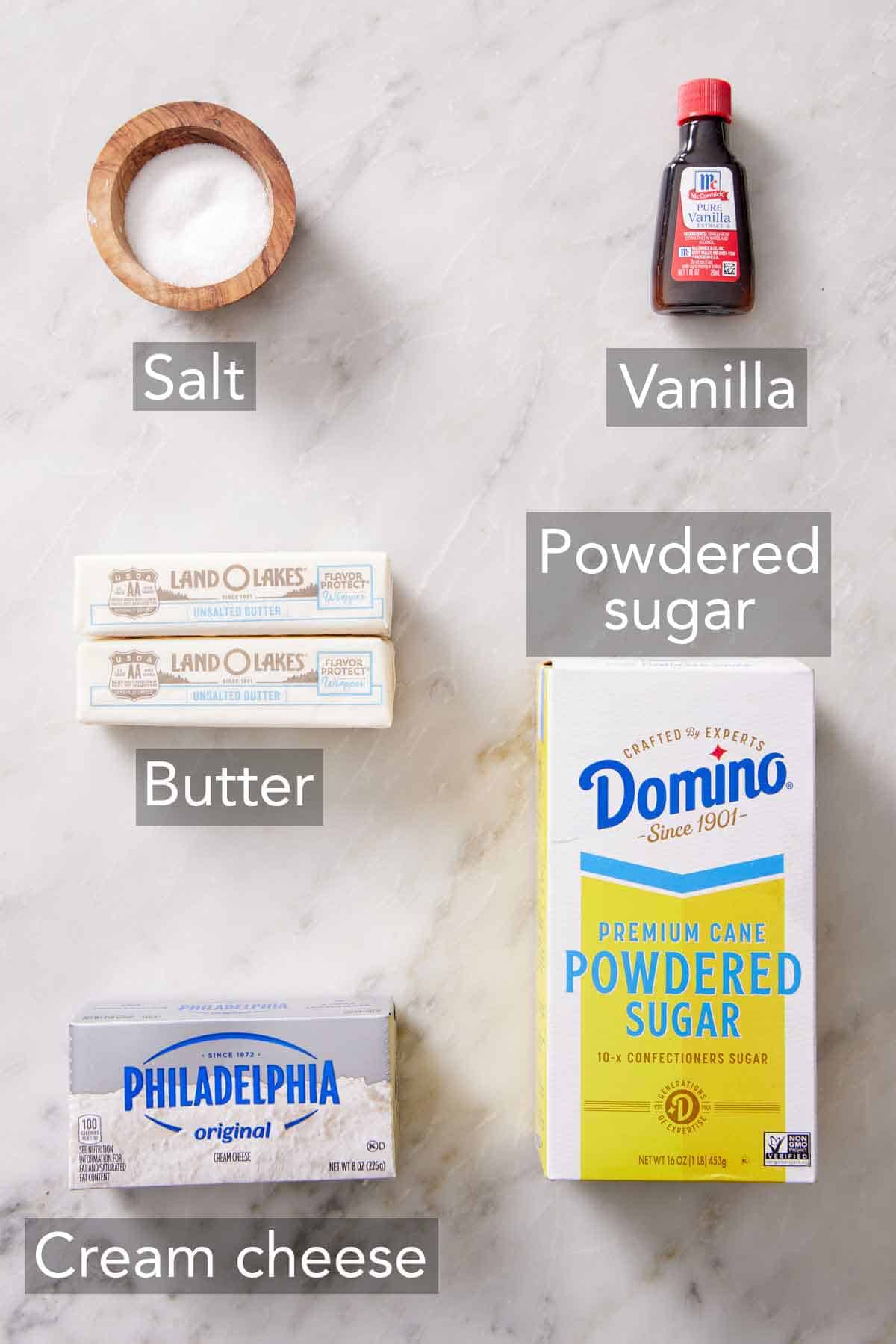
Cream Cheese — use a high-quality brick of full-fat cream cheese. I do not recommend using cream cheese that comes in a tub or is labeled as a spread, whipped, or low-fat cream cheese. Generic brands can also be hit or miss on flavor, but if there’s one you like, use it.
Butter — unsalted butter adds richness to the homemade cream cheese frosting, balancing out the tanginess from the block of cream cheese.
Powdered Sugar — this sugar dissolves very easily, so the frosting turns out ultra-smooth and light when blended with the cream cheese base.
Vanilla Extract — use pure vanilla extract for the purest vanilla flavor. You can also use vanilla bean paste or scraped seeds if desired.
How To Make Cream Cheese Frosting
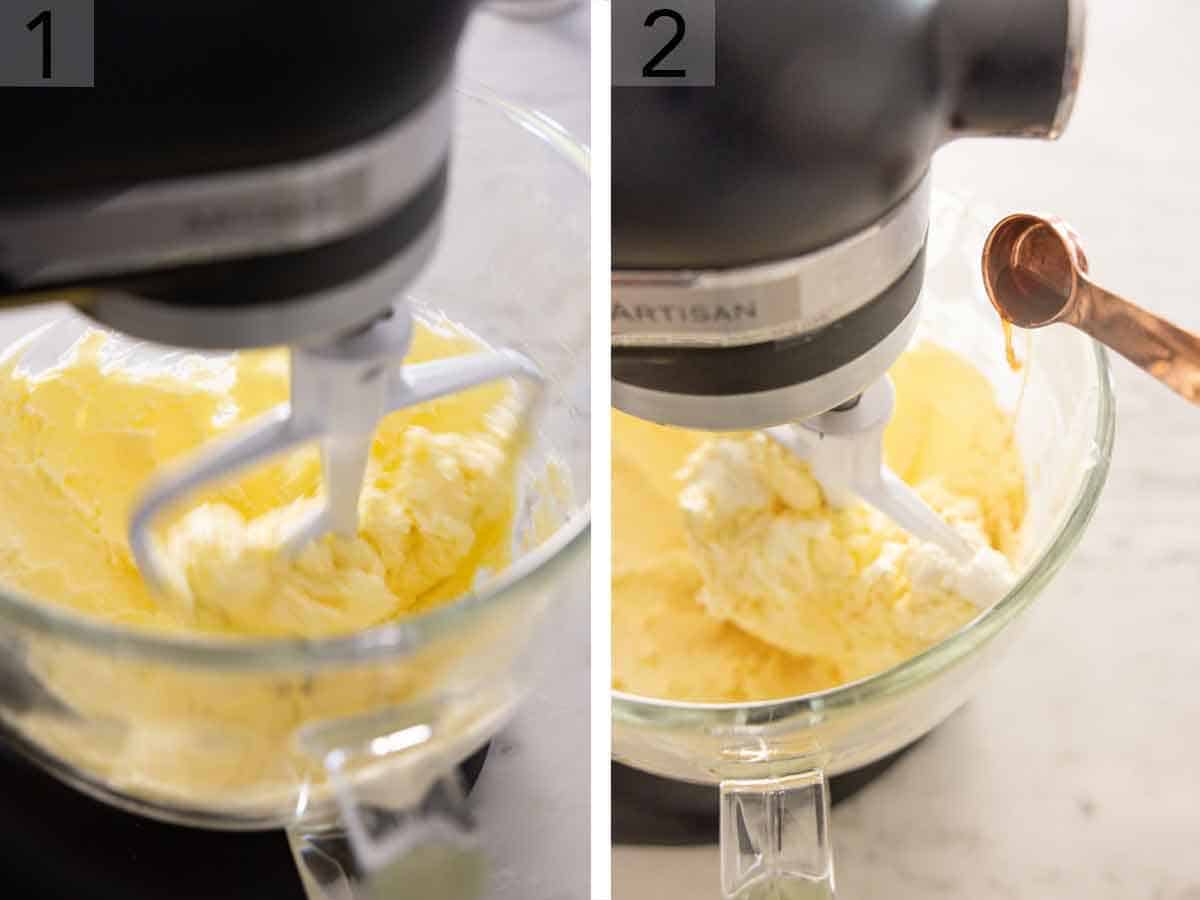
1. In a large bowl using an electric mixer or the bowl of a stand mixer with a paddle attachment, beat the room temperature butter at medium speed for about 30 seconds or until it is creamy.
2. Add the room temperature cream cheese, vanilla, and salt. Beat together on medium speed for about 2 minutes until very well combined, scraping down the sides of the bowl a few times during mixing.
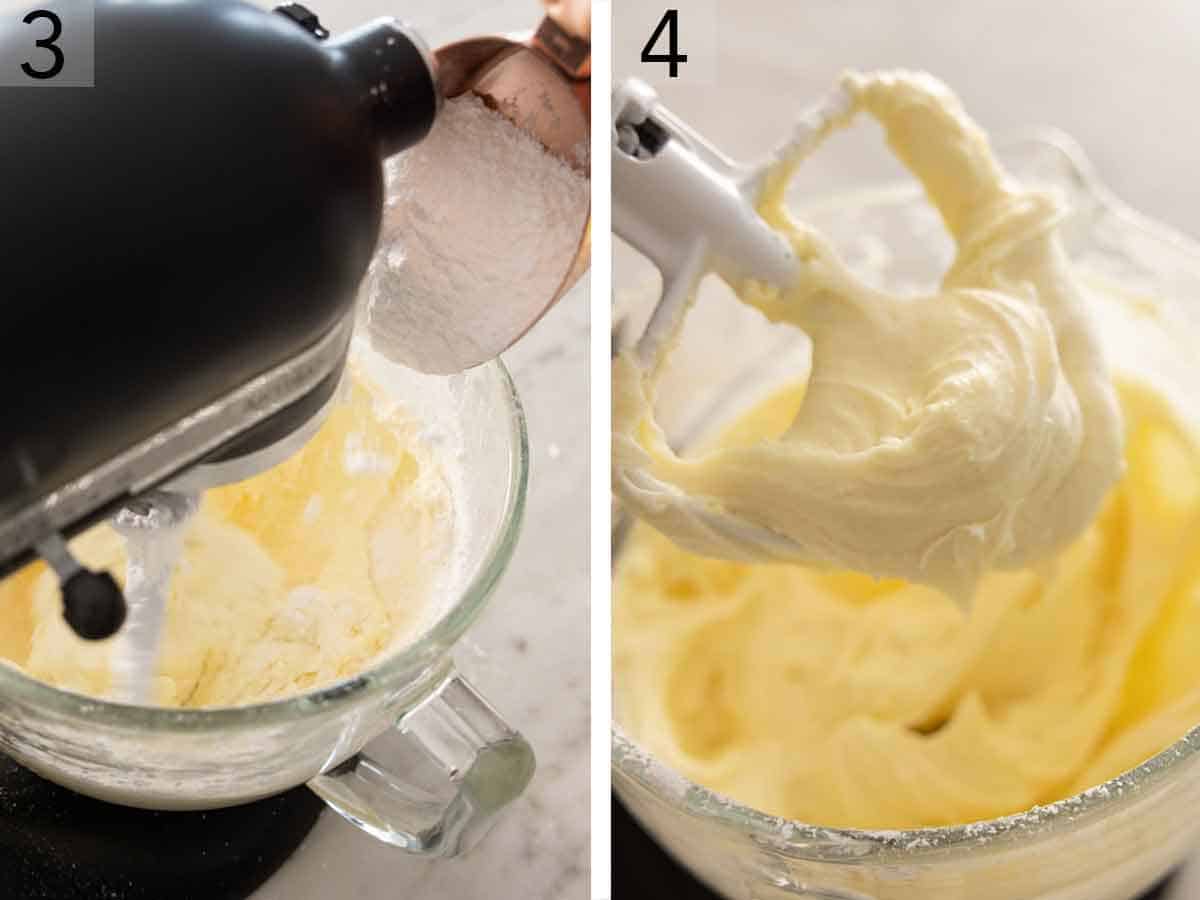
3. With the mixer on low speed, add 4 cups of the powdered sugar, one cup at a time, mixing until combined. If you would like a thicker frosting, use all 6 cups.
4. Scrape down the sides and bottom of the bowl. Beat it on medium-low speed for 1 minute or until nice and fluffy. Transfer the cream cheese icing to a piping bag fitted with a decorative tip, or spread it over your favorite cake.
Can I Pipe This Frosting?
Yes, you certainly can. For the best piping frosting, use the full 6 cups of powdered sugar. This will stiffen the frosting more so that it holds a decorative shape.
Why Is My Cream Cheese Frosting Runny?
The most common reason is not enough powdered sugar was used. Use a full 4 cups at minimum, adding more to make it thicker and firmer. Additionally, always use block cream cheese. The kind in tubs is softer and has more liquid, so the frosting won’t be thick and fluffy or hold its shape.
How To Avoid Lumps In Your Frosting
- Use room temperature ingredients. For the perfect cream cheese frosting, bring the butter and cream cheese to room temperature for at least 2 hours before starting the recipe. If either one is cold when you start mixing, they will not mix together smoothly, and you can end up with tiny lumps in the frosting.
- Scrape down the bowl frequently. This helps the butter and cream cheese blend properly, resulting in a smooth and fluffy frosting.
- Sift the powdered sugar. This will remove any clumps that can make the frosting lumpy. If you don’t have a flour sifter, you can also use a fine mesh sieve. This is especially helpful if you plan to pipe the frosting! Otherwise, tiny clumps of sugar can get stuck in the piping tips.
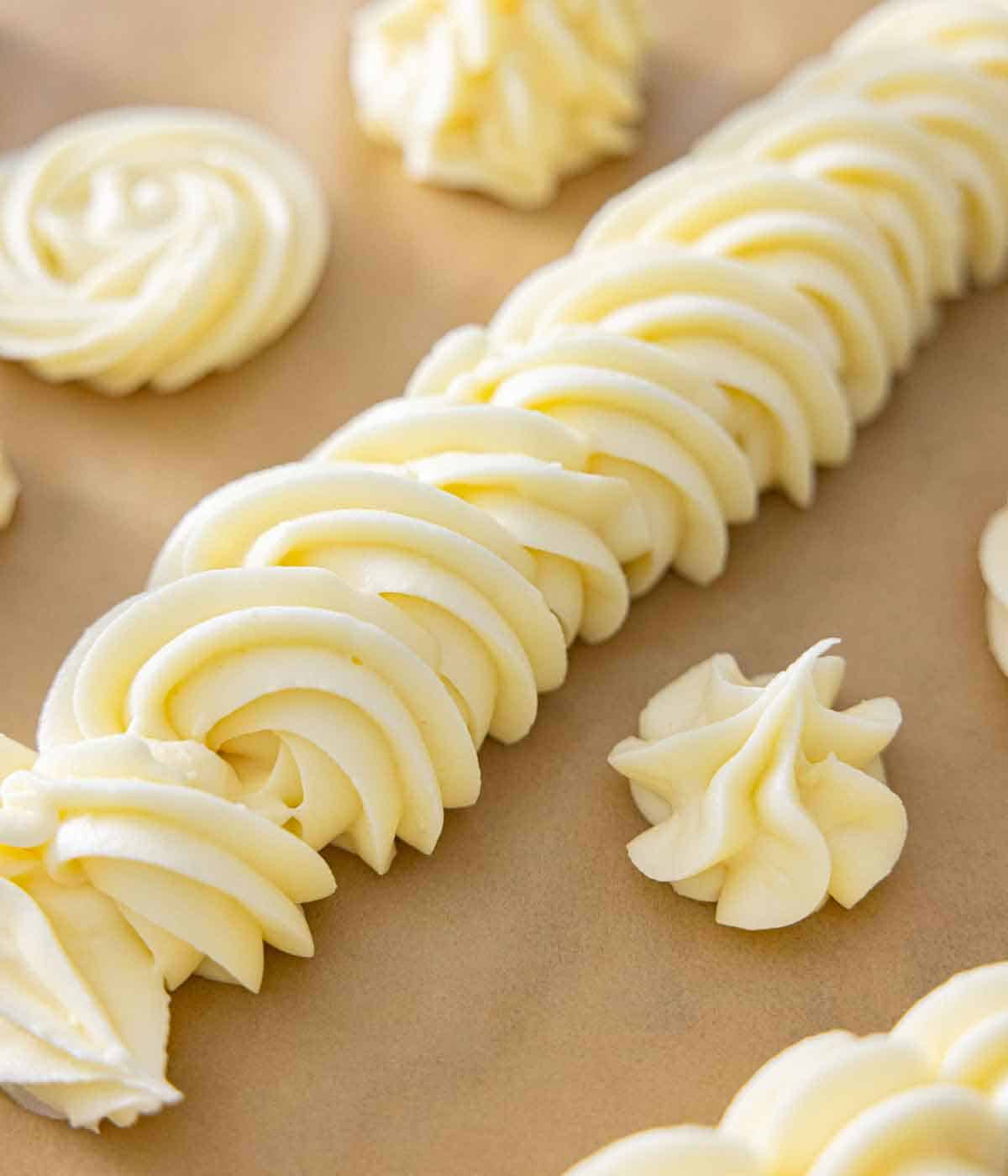
Ways To Use The Frosting
This easy cream cheese frosting recipe is the perfect complement to many baking recipes. These are some of my favorites:
- Red velvet cake or red velvet cupcakes
- A topping for cinnamon rolls
- Carrot cake or carrot cake cupcakes
- Pumpkin cupcakes or pumpkin cake
- A filling for pumpkin whoopie pies
Variations And Flavors
- Maple: Beat in 2 to 4 tablespoons of maple syrup into the frosting to suit your taste. You may want to add another pinch of salt to help balance the sweetness.
- Spiced: Add 1 teaspoon of ground cinnamon or pumpkin pie spice blend.
- Chocolate: Make half the recipe for chocolate ganache and cool it for 1 hour at room temperature. Once 4 cups of sugar are combined into the frosting, beat the cooled ganache into the frosting. Add more sugar if necessary.
- Fruit: Beat in ½ cup of your favorite fruit jam like raspberry, blueberry, or strawberry jam.
- Citrus: Enjoy a burst of citrus by whipping in 1-2 teaspoons of fresh lemon, lime, or orange zest.
How To Store
Store leftover frosting in an airtight container in the refrigerator for up to 1 week, or freeze it in a freezer-safe container for up to 3 months. Defrost it overnight in the refrigerator, and bring it back to room temperature, whipping it again before using.
Pro Tips For Making This Recipe
- What to frost: This recipe makes 5 cups of frosting, enough for 2 dozen cupcakes, 1 (8-inch) two-layer cake, or a 13×9-inch sheet cake. To make more frosting, multiply the ingredients as desired.
- Chill the frosting to set it. If you frost cakes, especially layer cakes, refrigerate the frosted cake to firm up the icing. Cream cheese frosting is softer by nature, so some chill time will help keep cake layers from sliding, and they will slice more neatly.
- Quickly soften the ingredients. If needed, you can quickly bring the butter and cream cheese to room temperature by cutting them into small cubes and spreading them out on a plate in a warm part of the kitchen. Never use the microwave! Learn how to soften butter quickly if you forgot to leave it out. This trick helps speed up the softening of cream cheese as well.

Frequently Asked Questions
Yep, cream cheese frosting always requires refrigeration. It will be okay at room temperature for a few hours, but for long-term storage, it should be chilled.
Yes, this frosting freezes great! To freeze a decorated cake, place the whole cake or slices of it on a parchment paper-lined baking sheet and freeze for 1-2 hours until the frosting is firm. Wrap the cake or slices in plastic wrap, put it in a freezer-safe container, and freeze for up to 3 months.
Yes, use full-fat cream cheese for the best results. It adds much-needed fat and richness to the recipe, which cannot be replicated with low-fat cheese.
If you’ve tried this Cream Cheese Frosting recipe, then don’t forget to rate it and let me know how you got on in the comments below. I love hearing from you!

Cream Cheese Frosting Recipe
Video
Equipment
- Stand mixer or handheld electric mixer
Ingredients
- ¾ cup unsalted butter room temperature (170g)
- 1 (8-ounce, 226g) block cream cheese room temperature
- 1 teaspoon vanilla extract
- 1 pinch salt
- 4 to 6 cups powdered sugar sifted (480g-720g)
Instructions
- In a large mixing bowl with a handheld electric mixer or the bowl of a stand mixer with the paddle attachment, beat the butter on medium speed for about 30 seconds until creamy. Add the room temperature cream cheese, vanilla, and salt. Beat together on medium speed for about about 2 minutes until very well combined.
- With the mixer on low speed, add 4 cups of the powdered sugar in a cup at a time. Mix until combined. If you would like a thicker frosting, use all 6 cups.
- Scrape down the sides and bottom of bowl. Beat on medium-low speed for 1 minute or until nice and fluffy. Transfer to a piping bag fitted with a decorative tip or spread over your favorite cake. This recipe makes enough frosting for 2 dozen cupcakes, 1 (8-inch) two-layer cake, or a 13×9-inch sheet cake.
Notes
- What to frost: This recipe makes 5 cups of frosting, enough for 2 dozen cupcakes, 1 (8-inch) two-layer cake, or a 13×9-inch sheet cake. To make more frosting, multiply the ingredients as desired.
- Chill the frosting to set it. If you frost cakes, especially layer cakes, refrigerate the frosted cake to firm up the icing. Cream cheese frosting is softer by nature, so some chill time will help keep cake layers from sliding, and they will slice more neatly.
- Quickly soften the ingredients. If needed, you can quickly bring the butter and cream cheese to room temperature by cutting them into small cubes and spreading them out on a plate in a warm part of the kitchen. Never use the microwave! Learn how to soften butter quickly if you forgot to leave it out. This trick helps speed up the softening of cream cheese as well.



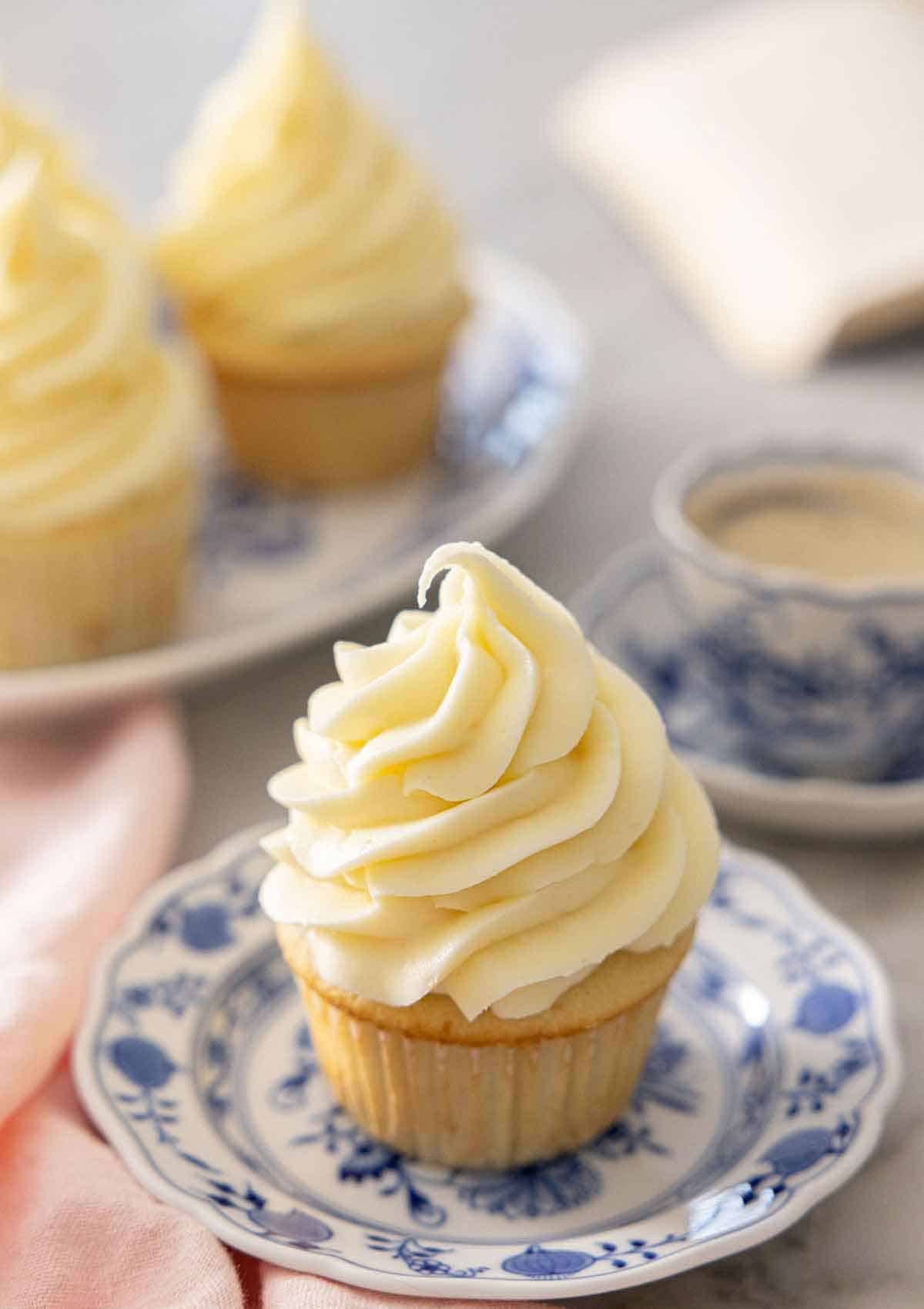





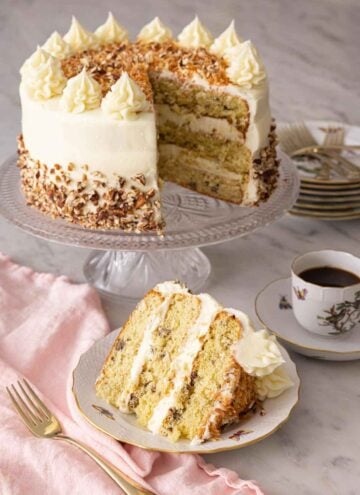





Gul says
For more firmer frosting; I cream butter by adding icing sugar with paddle attachment on medium -high speed, scrapping couple of times, until fluffy, light in colour and sugar dissolved, then add already beaten, smooth cold cream cheese mixing on medium speed until well combined.
Kasia says
Hi John,
I love your recipes! 🙂
I live in Europe, where it’s hard to get the type of cream cheese usually called for in cream cheese frosting recipes. Can I use Philadelphia cheese (or an equivalent) here?
Thanks!
Cally Paulina says
Amazing recipe! Made the perfect buttercream and the sugar was just right! Thank you for the amazing recipe. For the longest time I couldn’t pipe cream cheese frosting! Now I do!
jkanell says
So happy you liked it Cally! Feel free to leave a rating when you have a chance. Happy baking!!
Monica says
John man, whatta hell. You are awesome. Where did you learn all those things? CONGRATS!! I and the whole world love you. Follow you all over, thanks for sharing. Sharing is love!!!!!
Angel says
Hi John! Have you tried cold cream cheese instead of room temp for cream cheese frosting? It totally works, ends up much thicker, and pipes beautifully!
jkanell says
I’ll have to try that now!!!
Chanpreet says
Hi John, I love the taste of this recipe but I can’t figure out what I’ve done wrong! The frosting fell flat and I wasn’t able to pipe it onto my cupcakes 🙁
jkanell says
Oh no! It is soft but should pipe. I might add more sugar and or sub some of the cheese for butter.
elyse says
This recipe totally gets 5 stars for me. I LOVE cream cheese frosting but lately I feel like it hasnt been tasting very good when you buy it from the store. Its like cheap or something. THIS is how it should be!